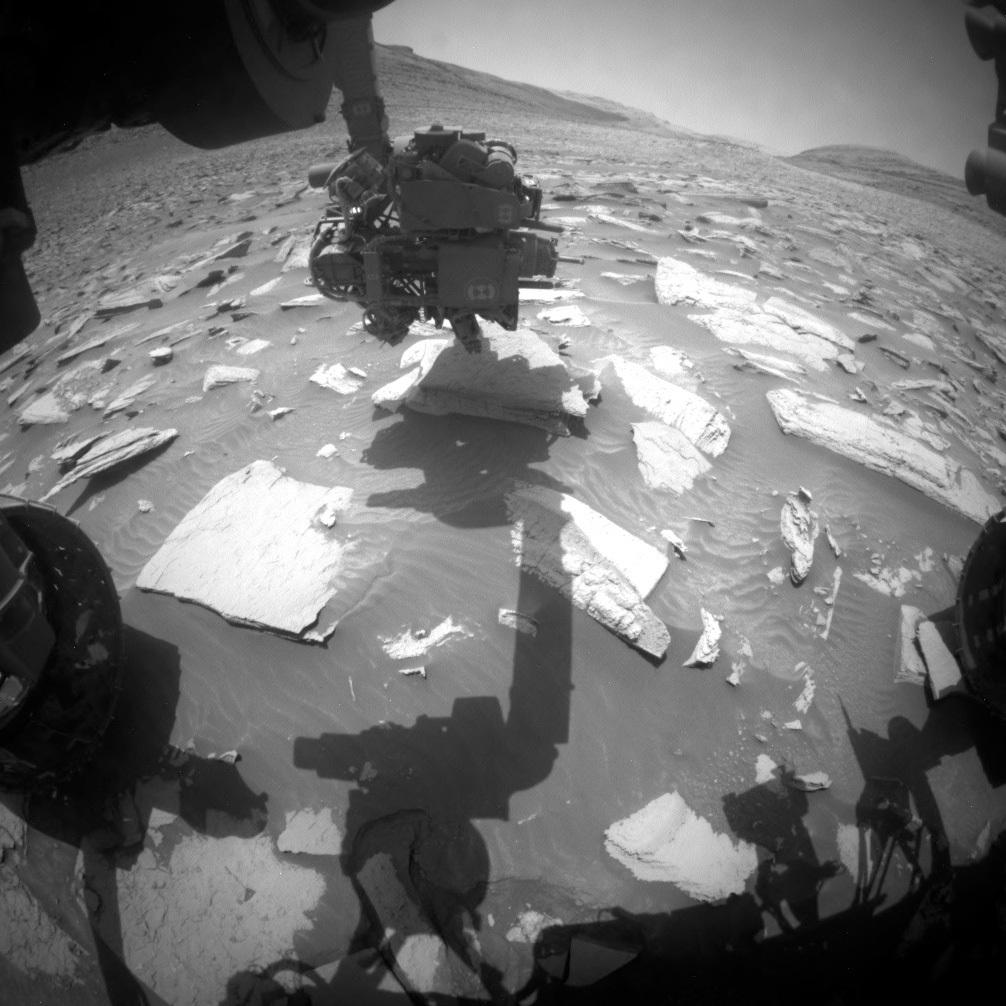2 min read

Earth planning date: Wednesday, January 10, 2024
Today the science team members were excited about having reached an area of polygonal fracturing in the workspace. Unfortunately, due to possible rover instability we were unable to unstow the arm safely and thus, no contact science today. The image above shows the unstowed arm performing contact science on a previous target "Chagoopa." A discussion arose, debating whether we should slightly reposition here — known as a 'bump' — into a good place for contact science, or if we should keep driving onwards and upwards. Ultimately, the discussion concluded 'a bird in the hand,' and we chose to slightly readjust and bump here in preparation for contact science during the upcoming weekend plan.
A lack of contact science today meant remote sensing science could have a field day! Today we planned 1.5 hours of remote activities, beginning with a ChemCam LIBS on the polygonal fractures on target "Evolution Valley." Geo also planned two long distance ChemCam RMIs of upper Gediz Vallis Ridge. The Mastcam team were able to complete every request for an image in the time we had today, including six bedrock targets all named creek: "Cartridge Creek," "Carroll Creek," "Cataract Creek," "George Creek," "Hogback Creek," and "Pinyon Creek." The planned science on this first sol ends with a Navcam suprahorizon movie.
After the targeted science, the rover is on the move — although not very far! We’ll bump here ready for a whopping 3 hours of planned science over the weekend, hopefully including contact science on the polygonal fractures in this workspace. On the second sol of this plan the rover will automatically take a ChemCam LIBS target to maximise science return and Navcam will search for dust devils. Here’s to a wonderful weekend full of science and making the most of this bird in the hand.
Written by Emma Harris, Graduate Student at Natural History Museum







